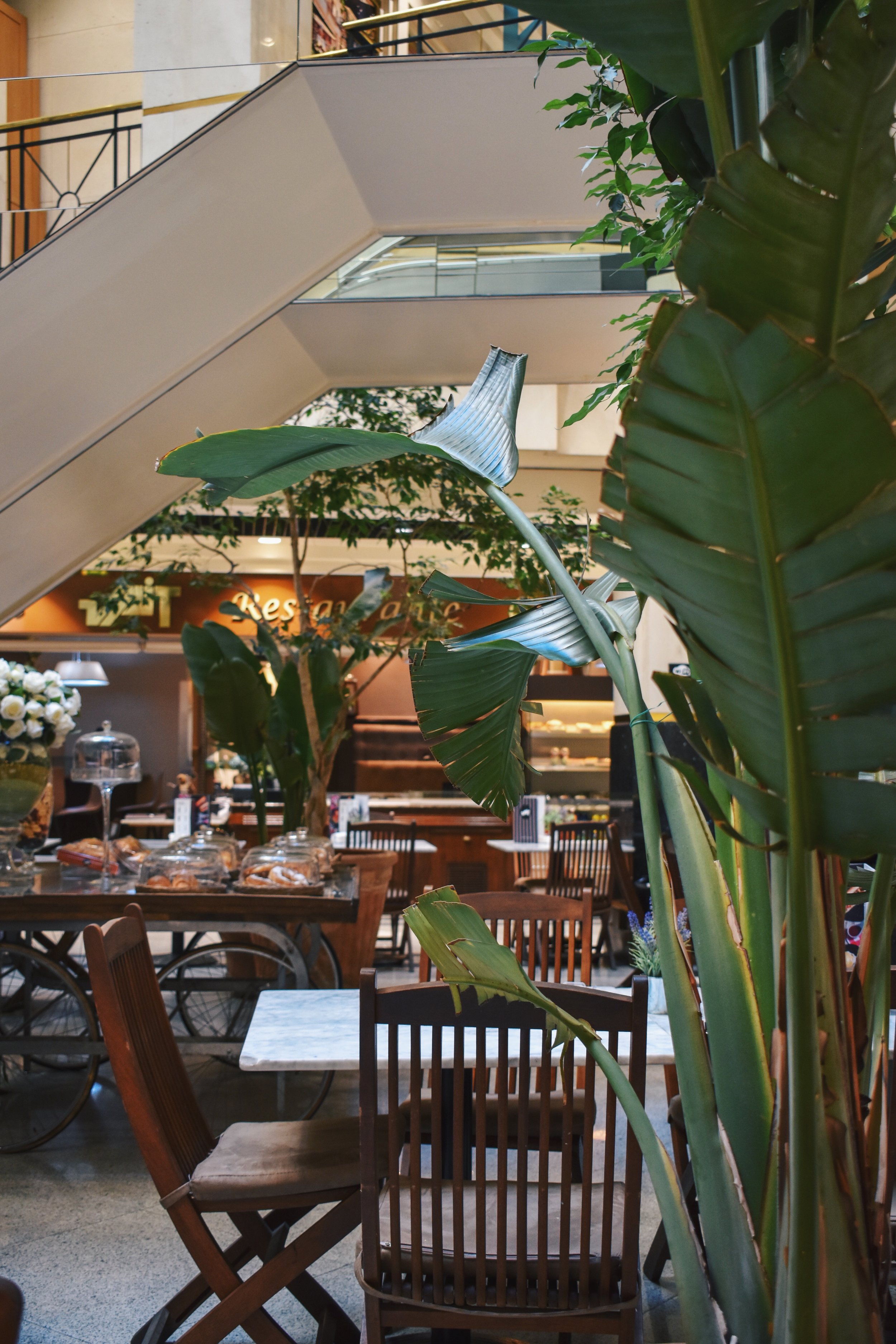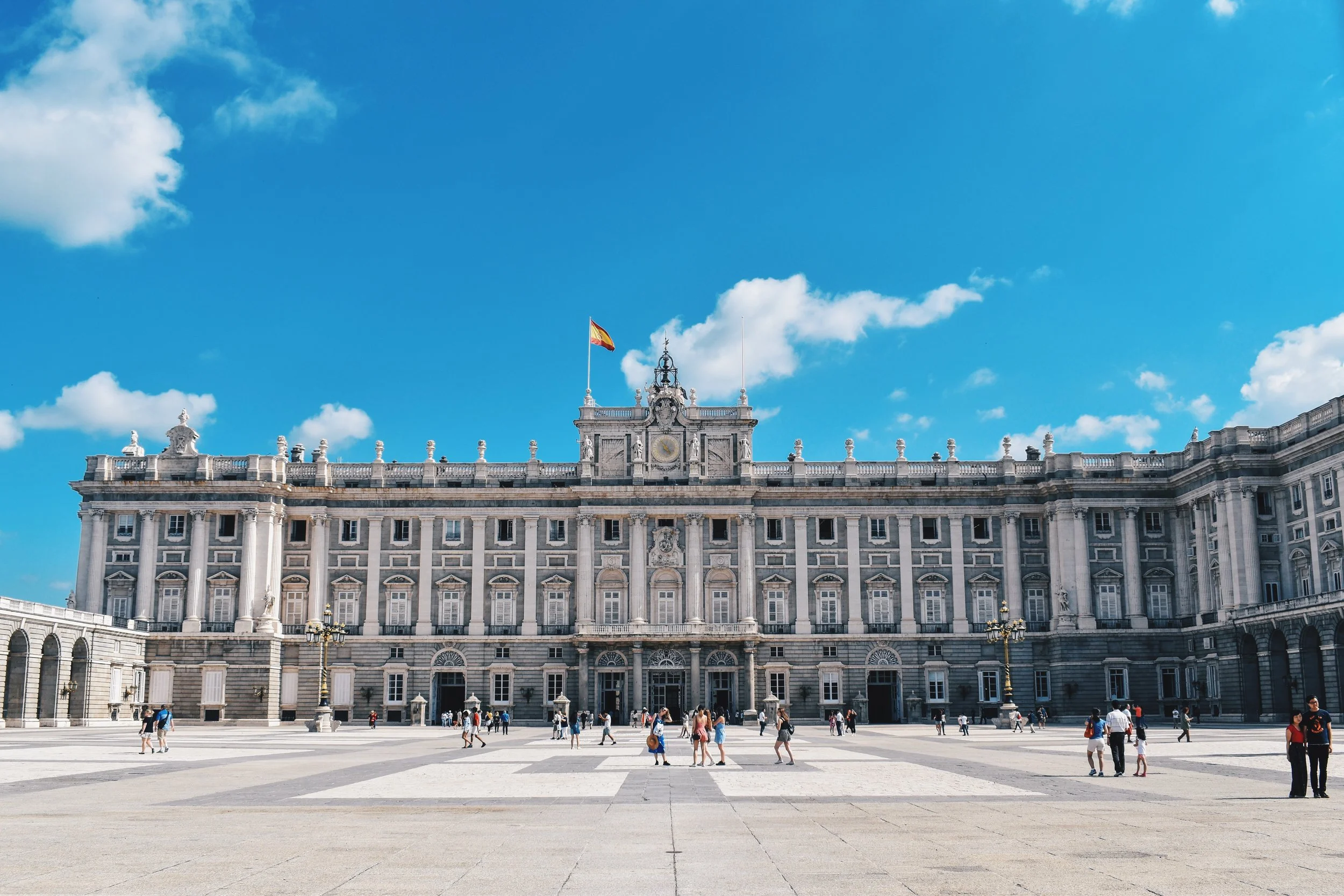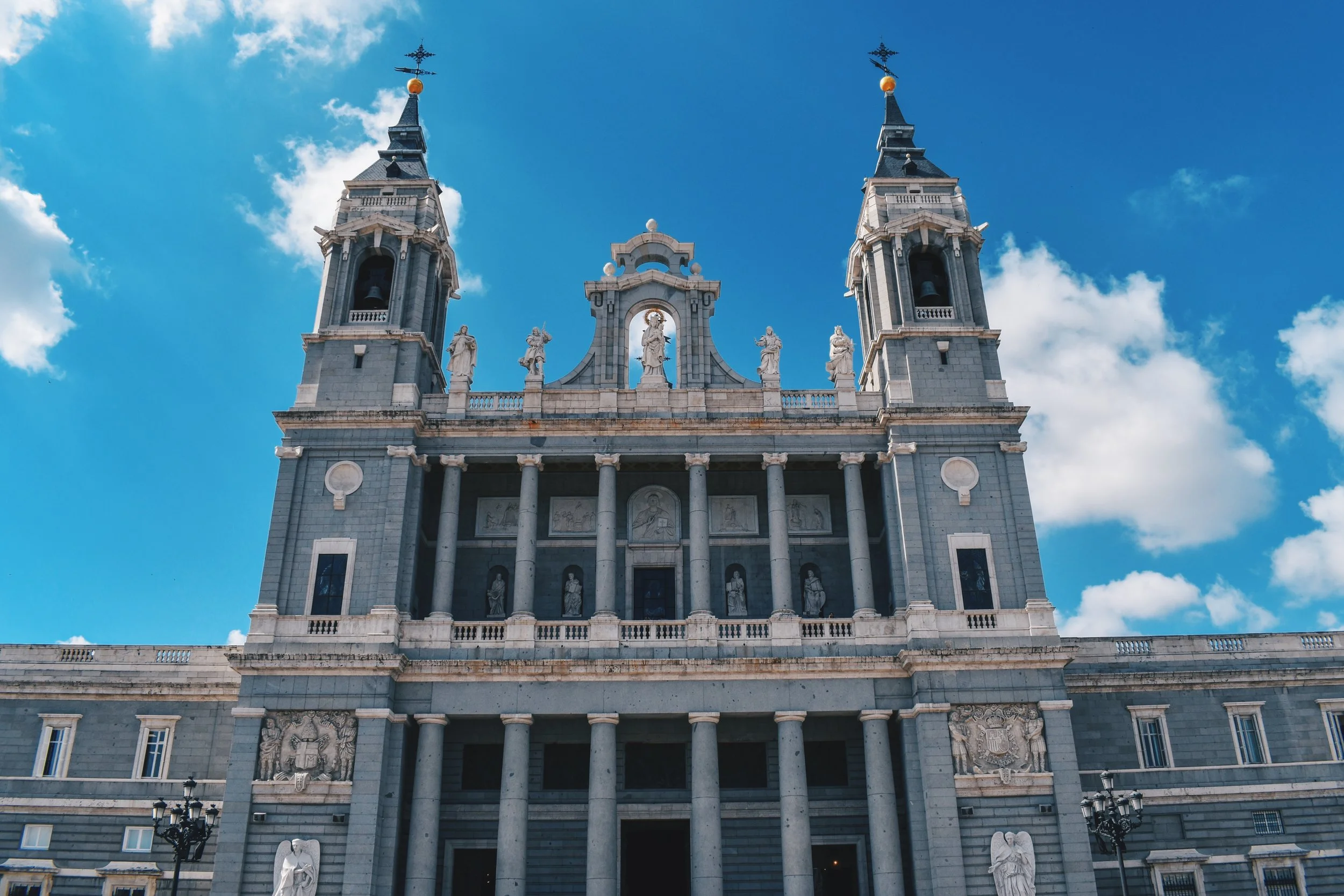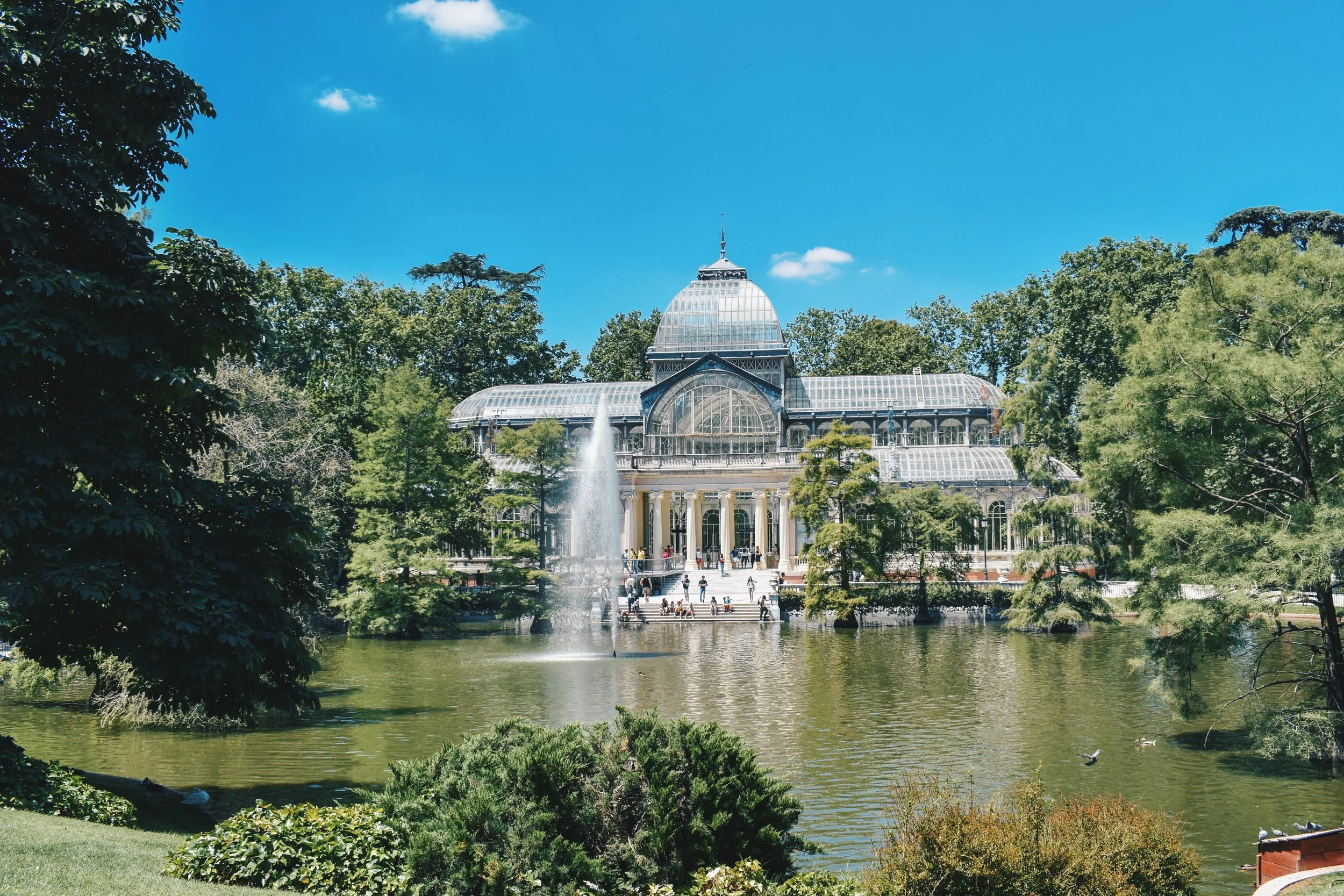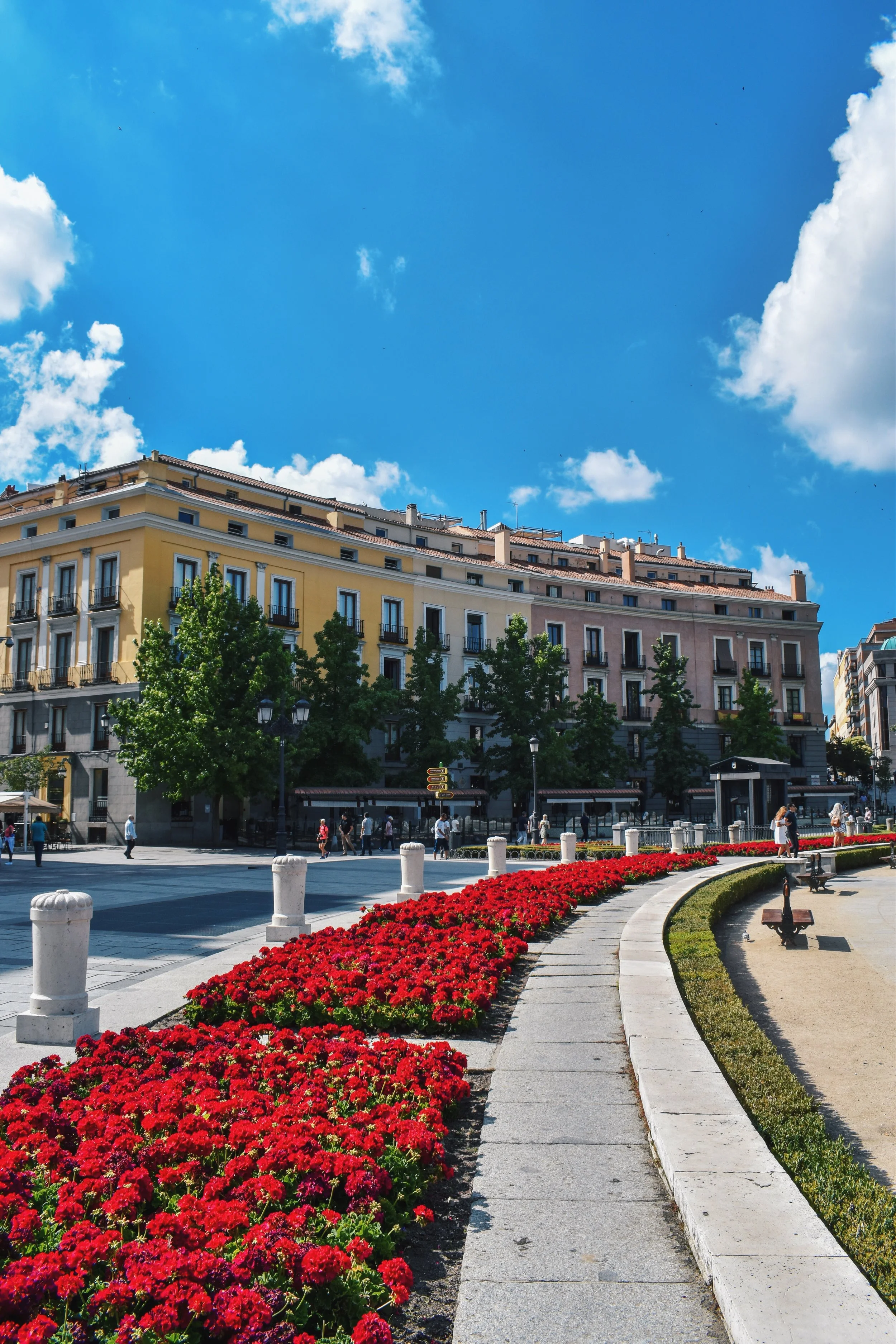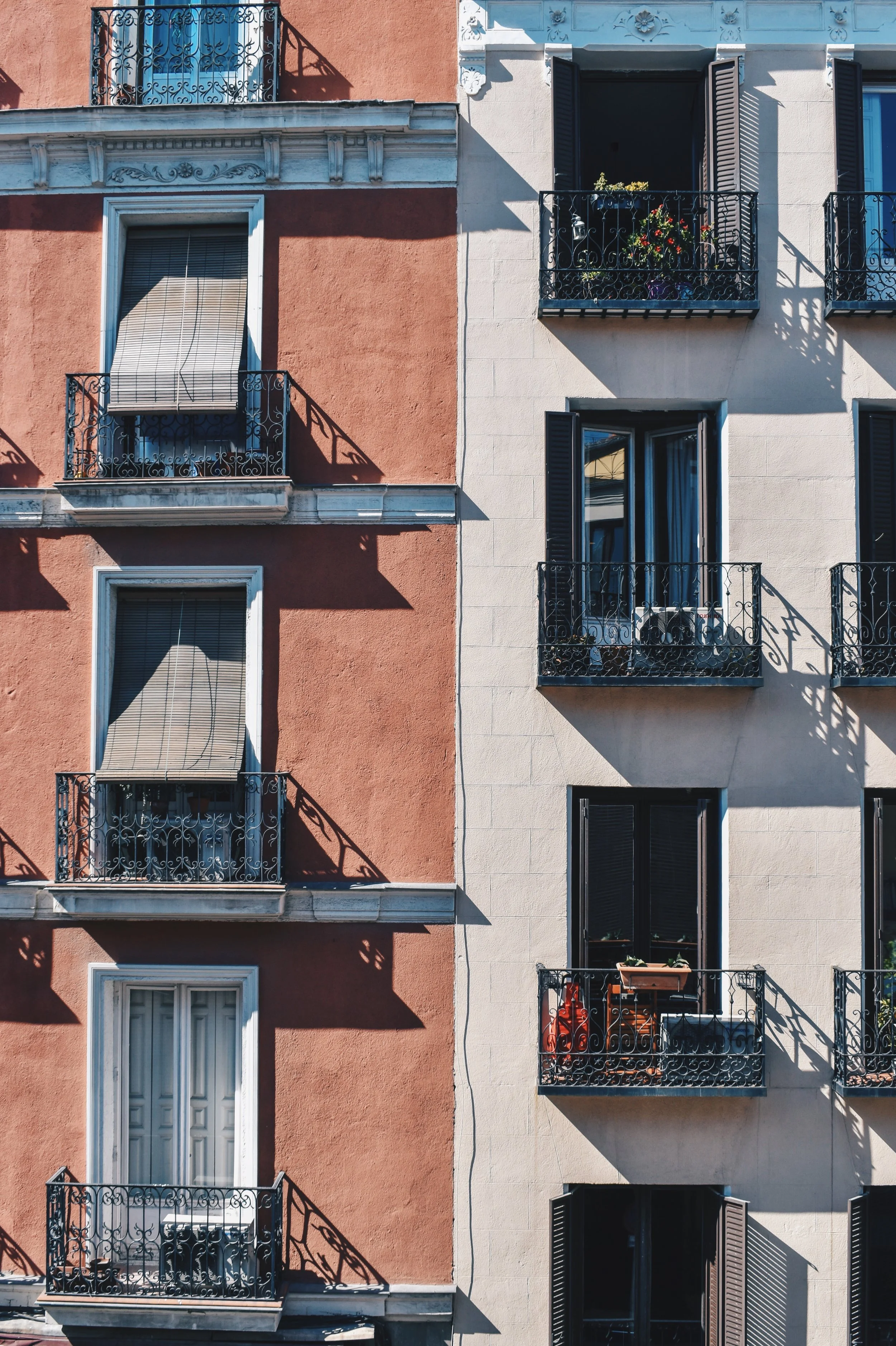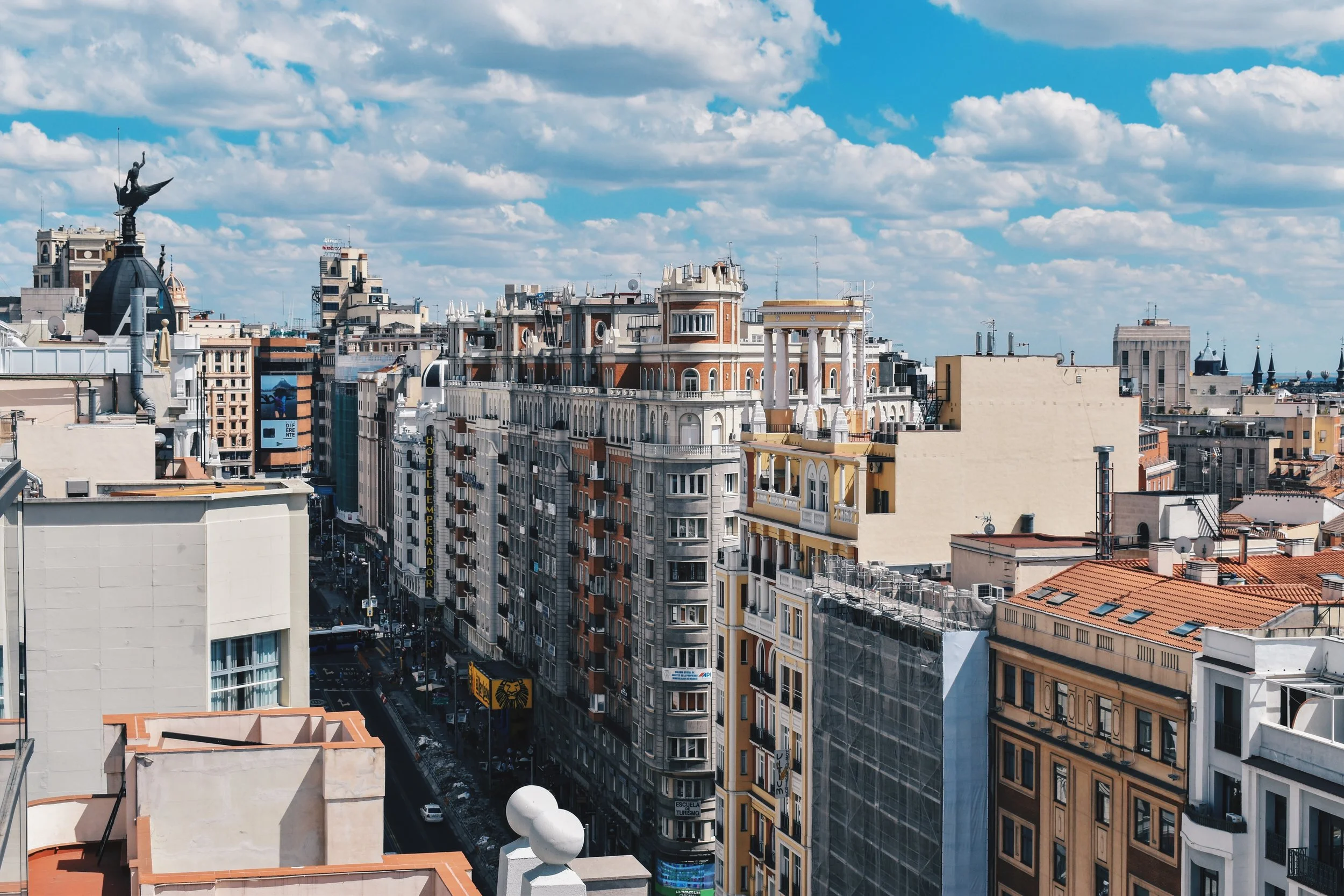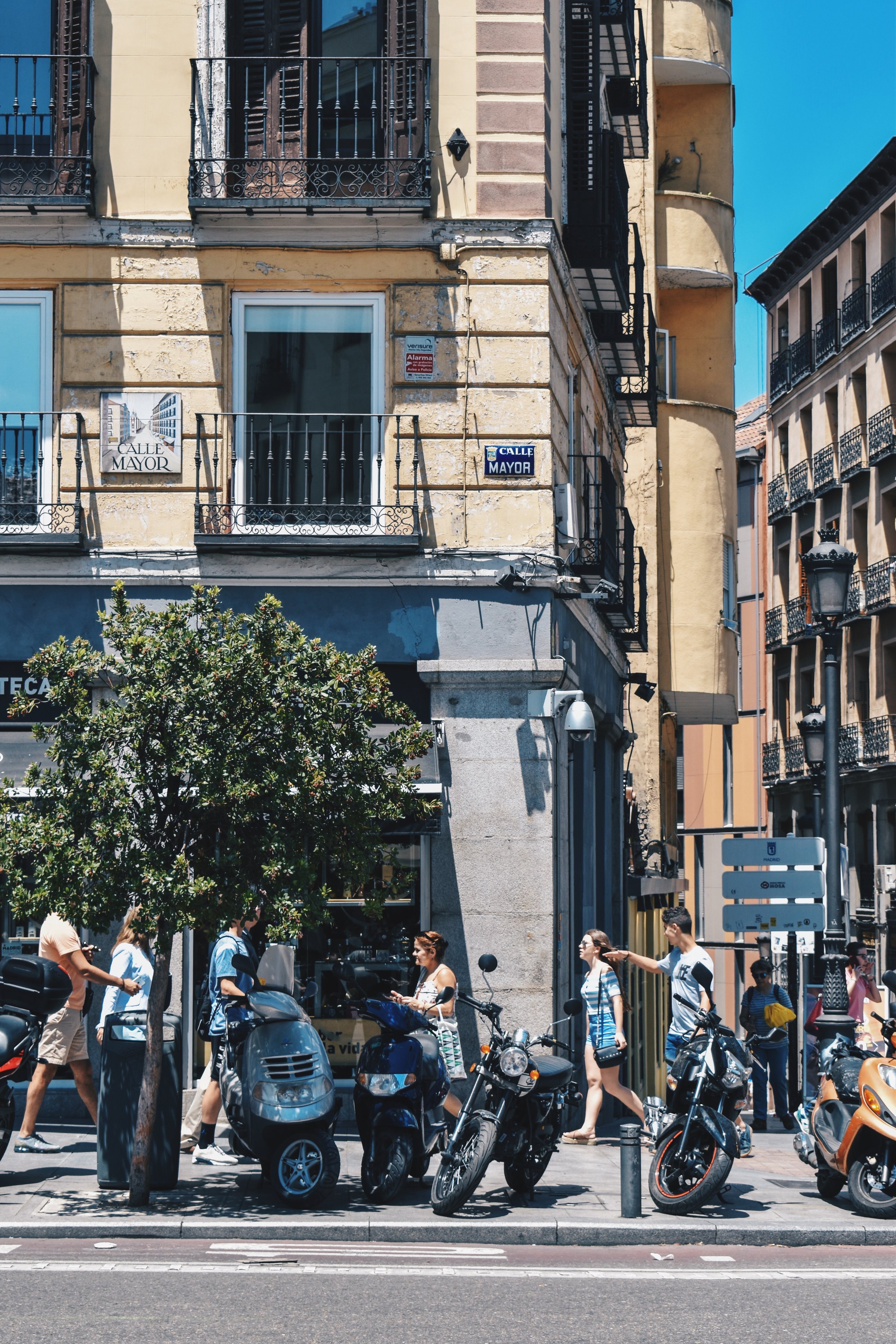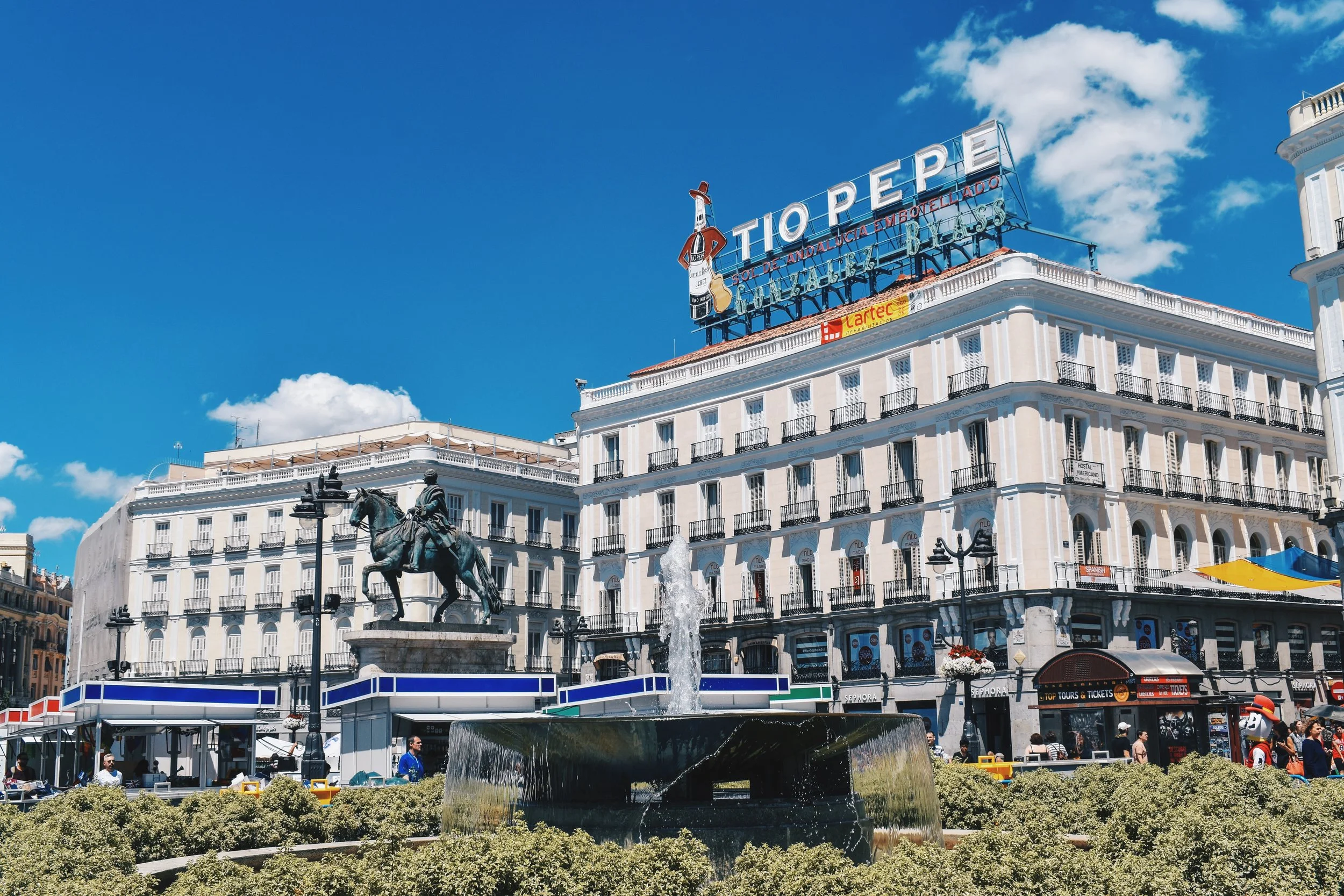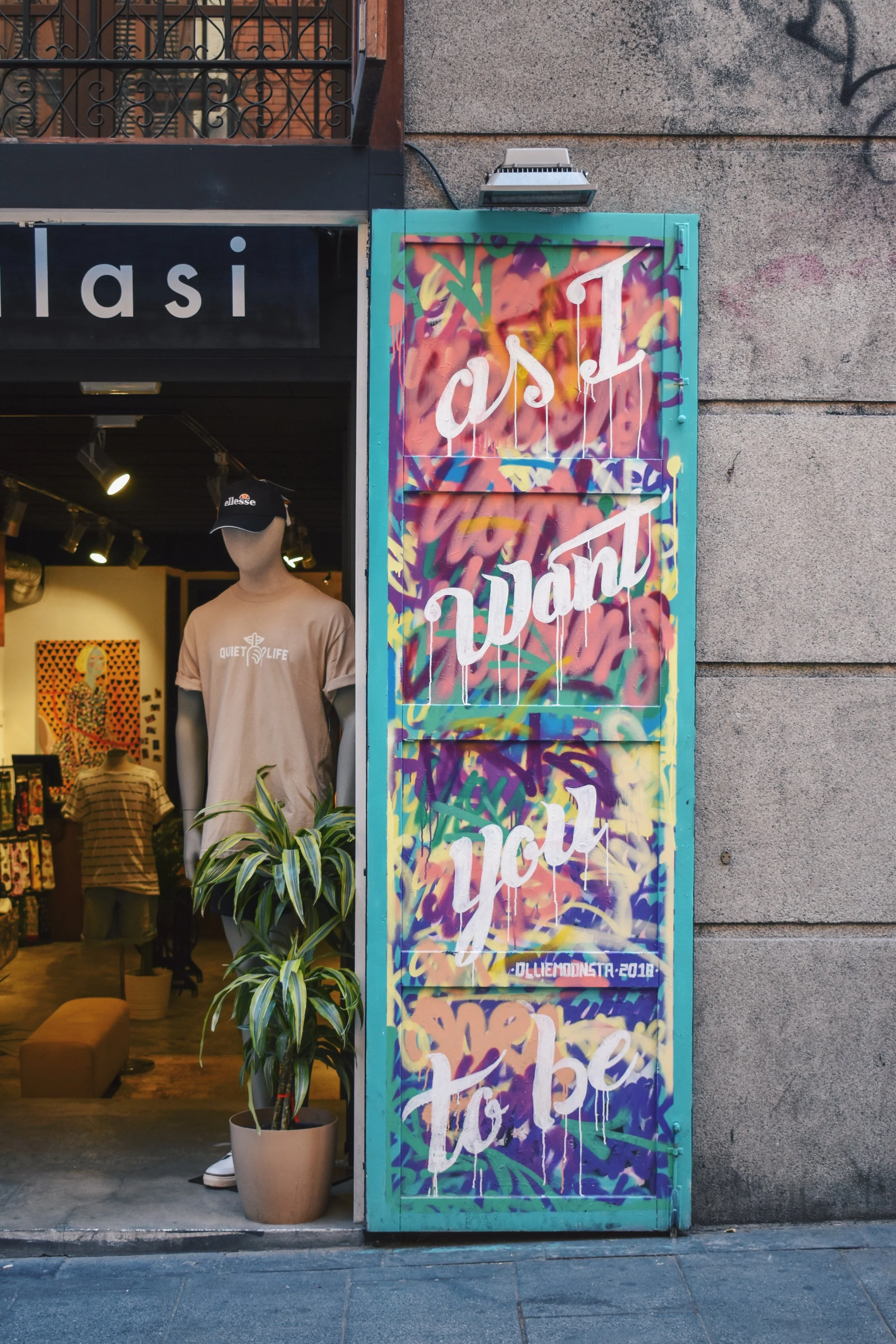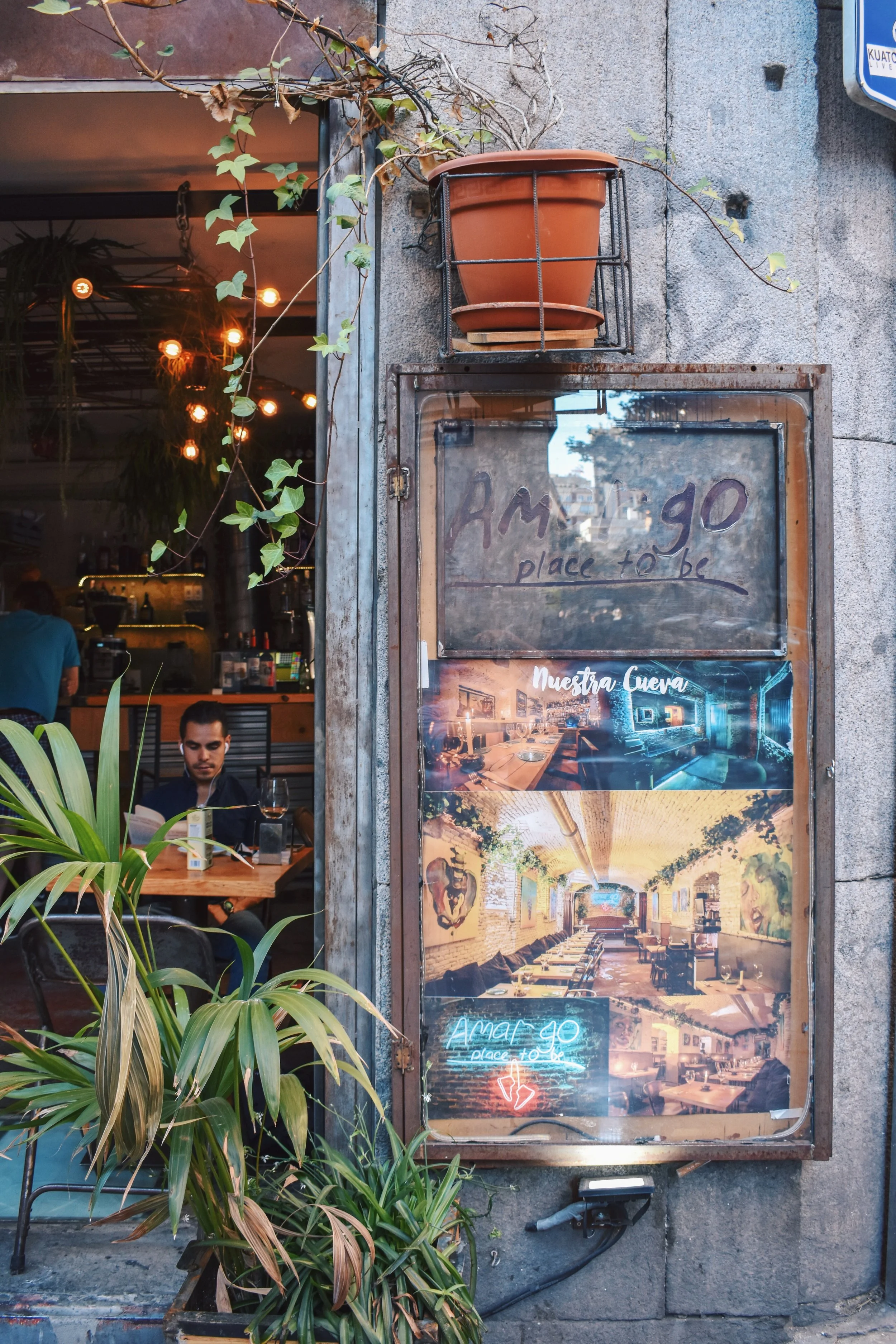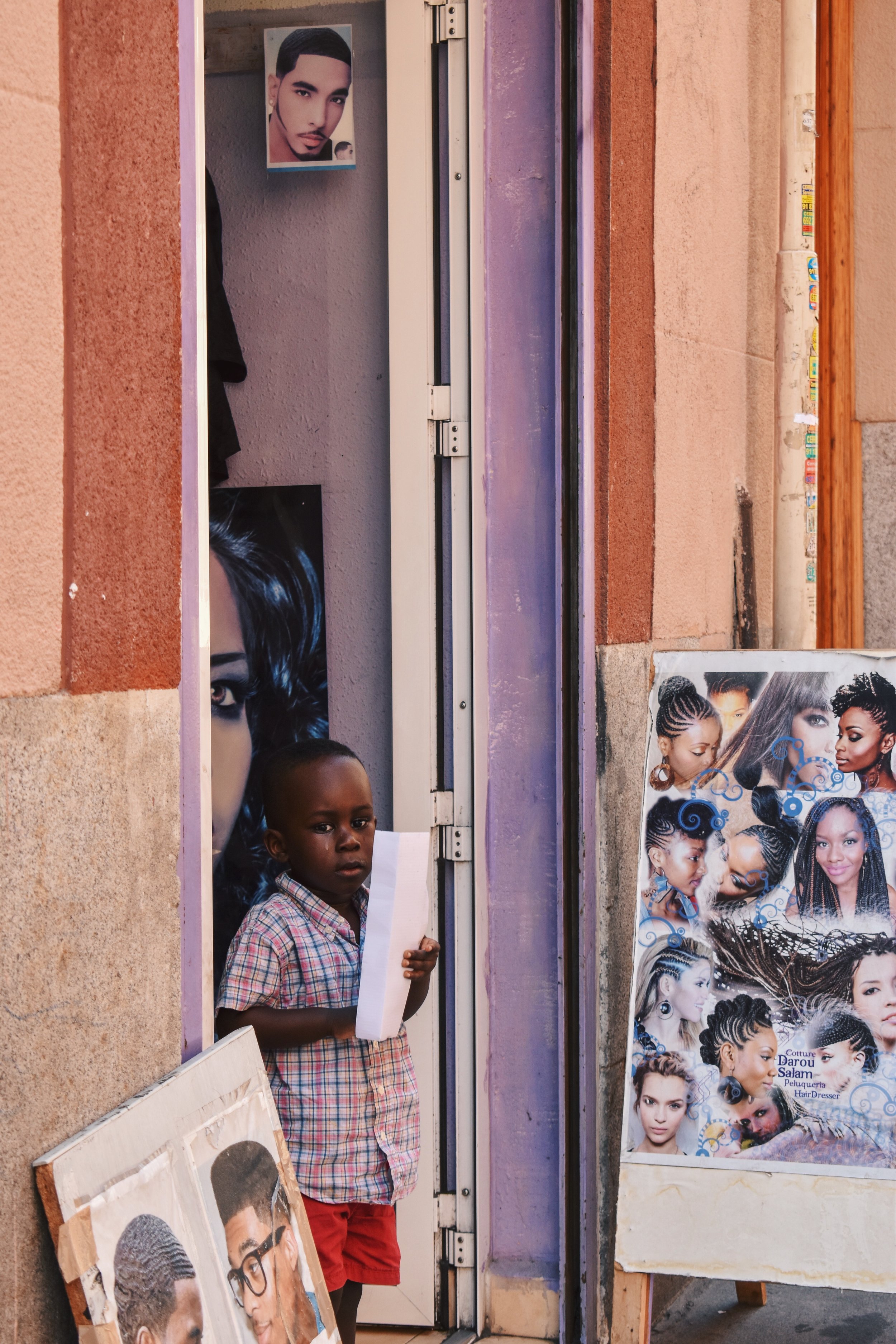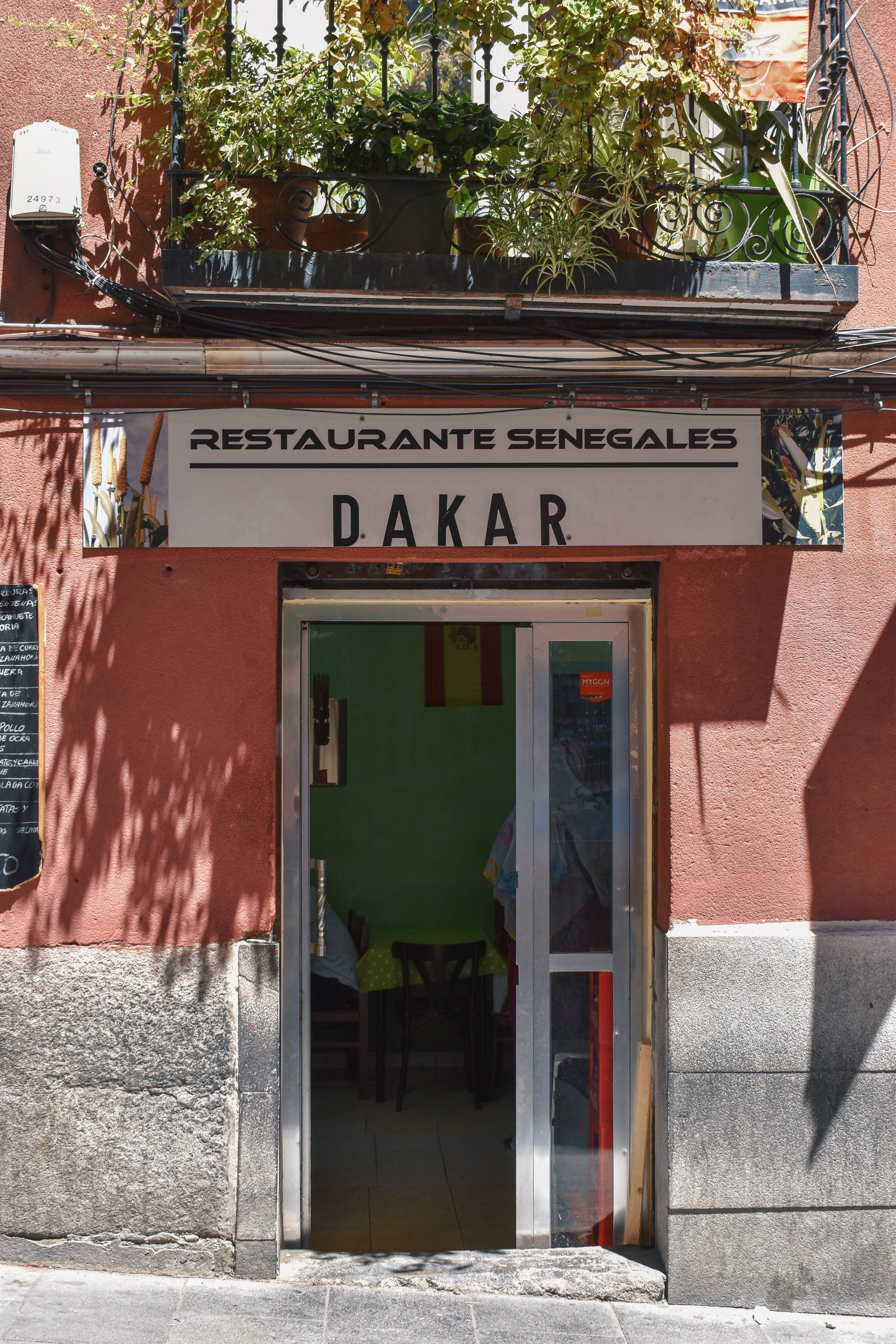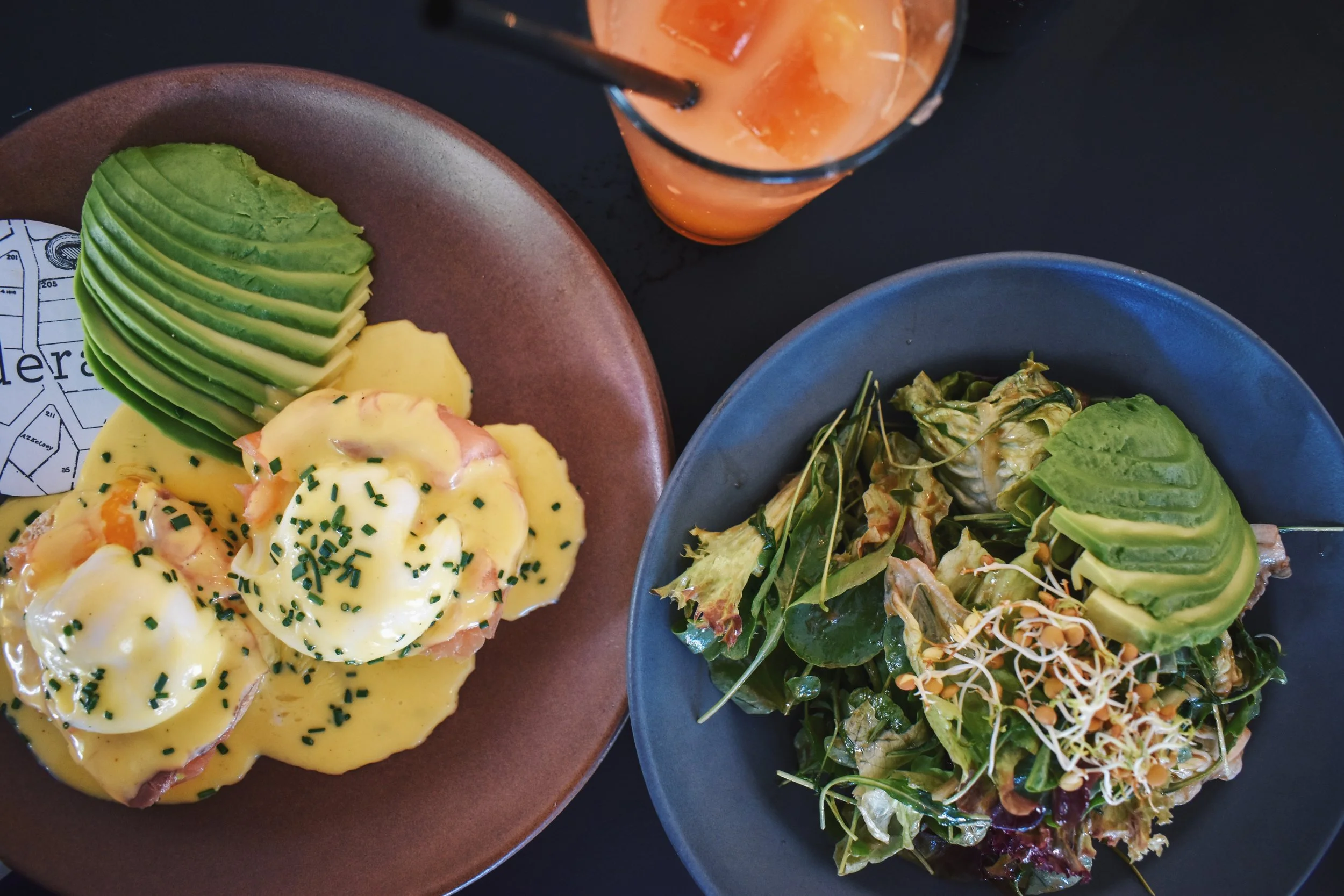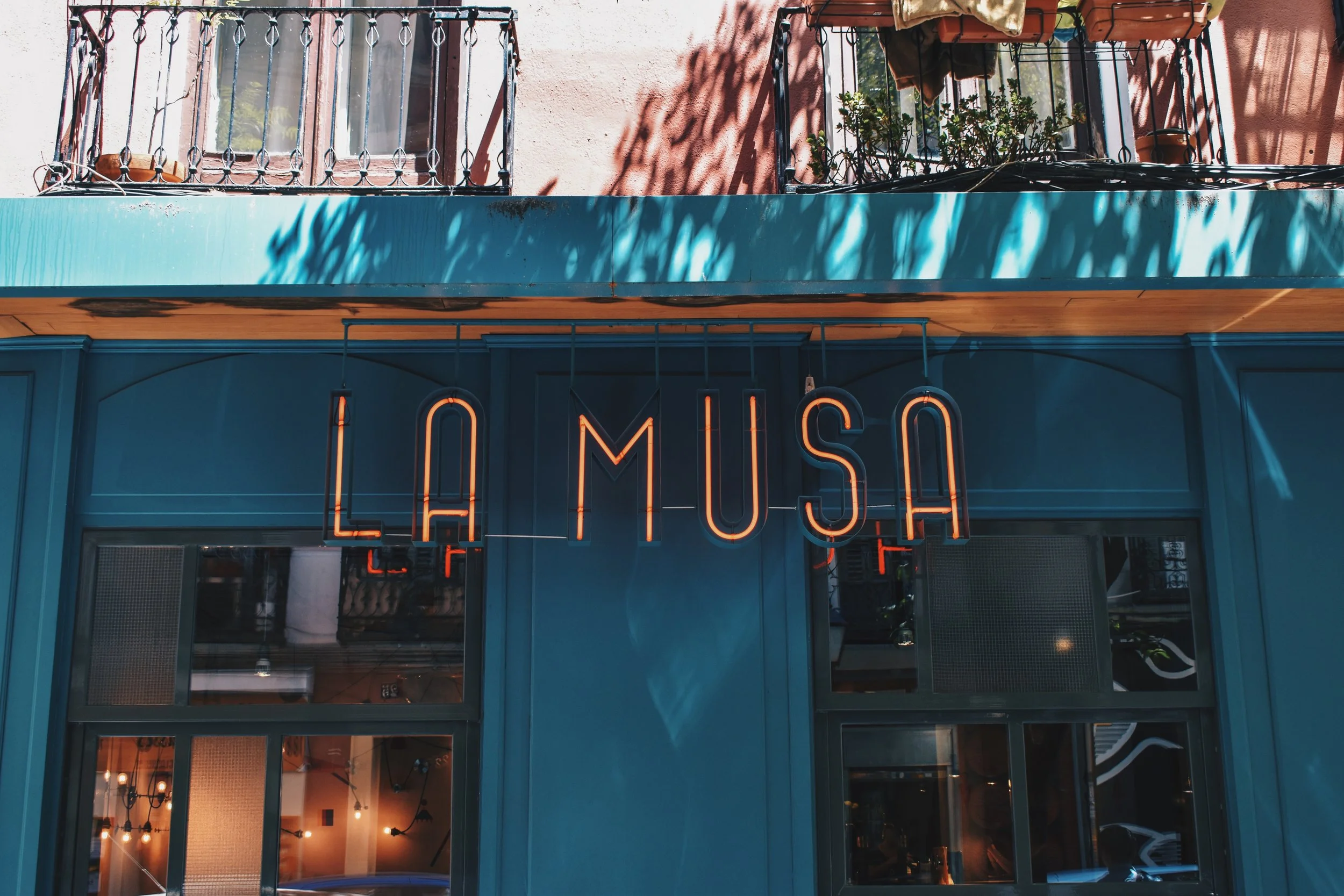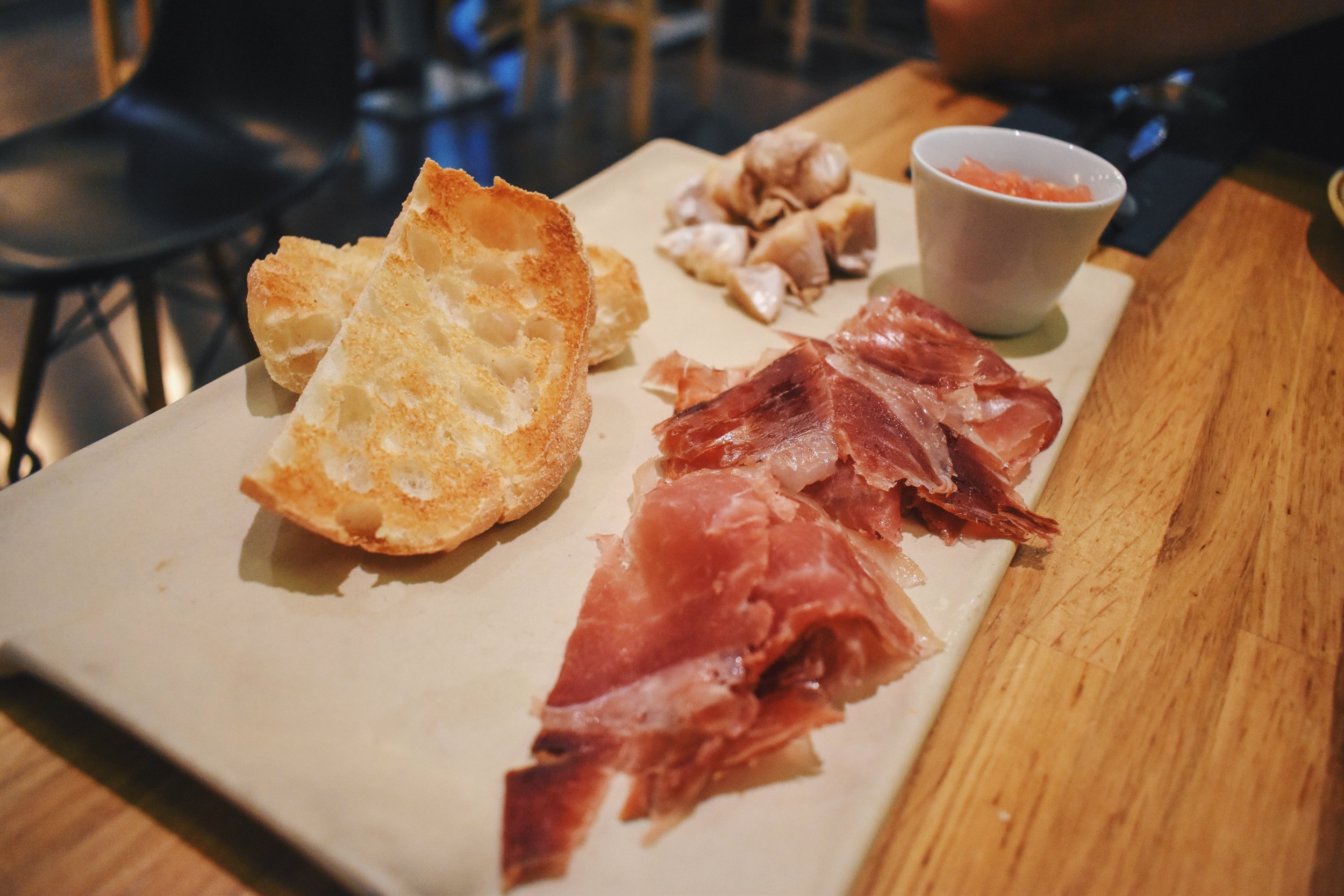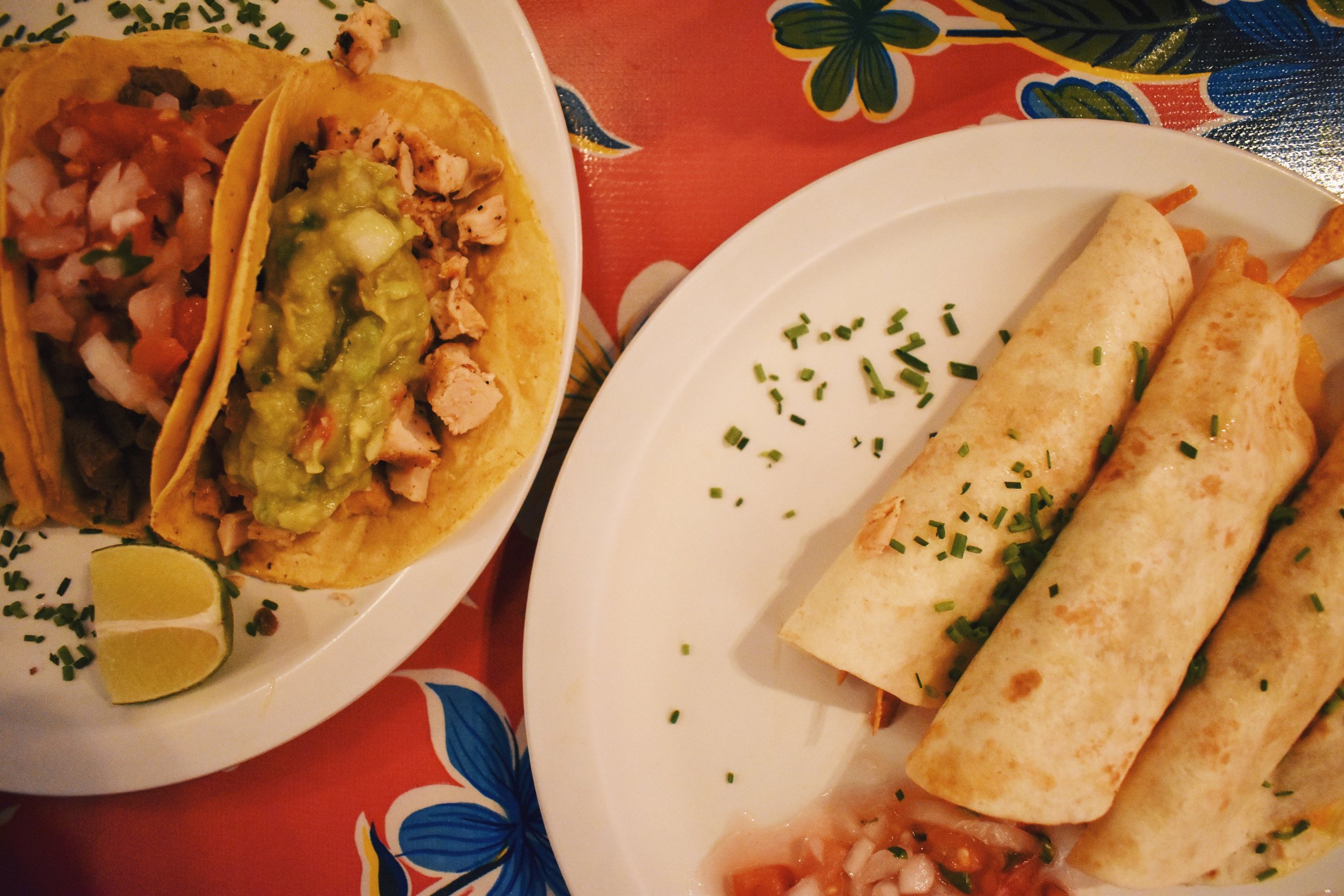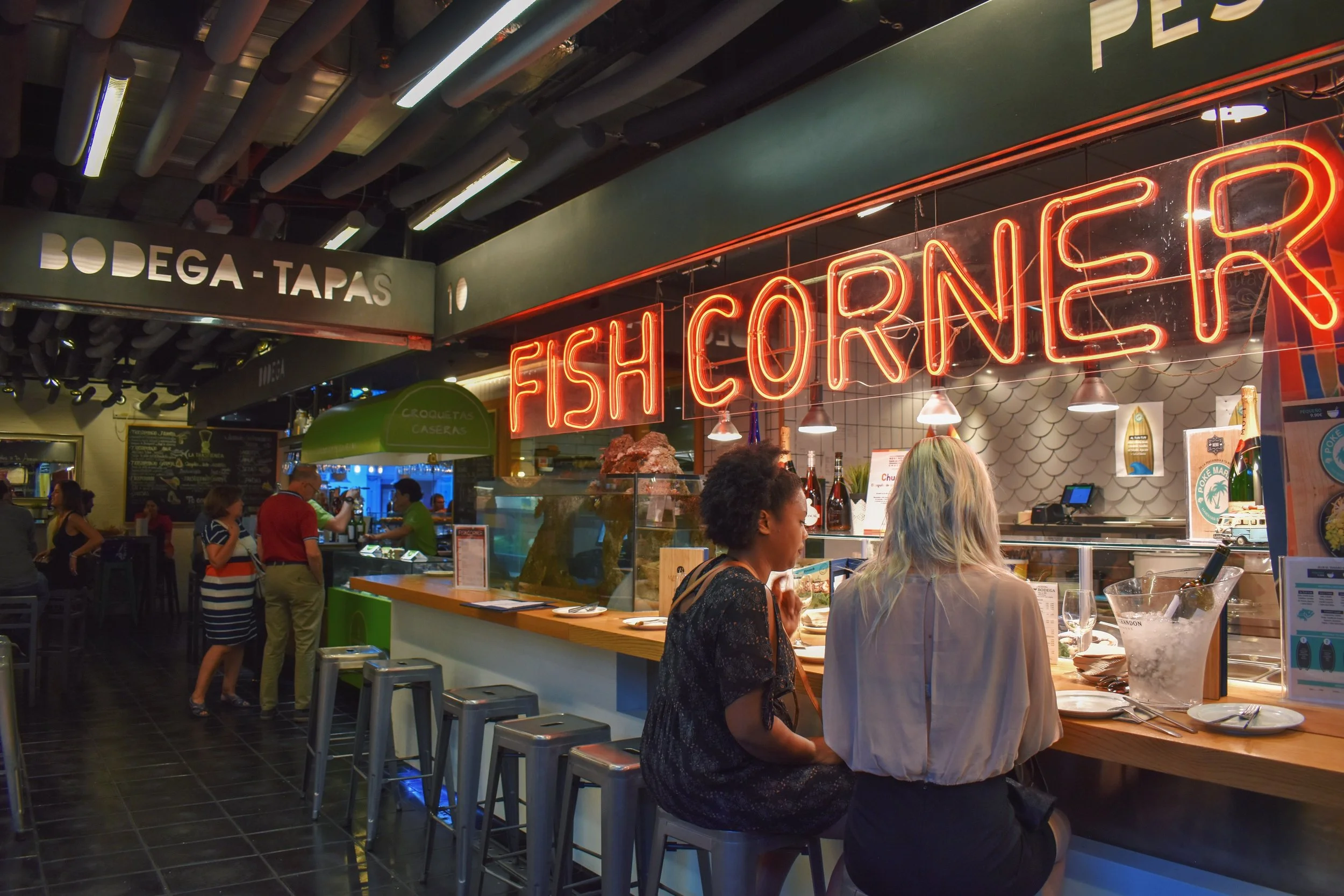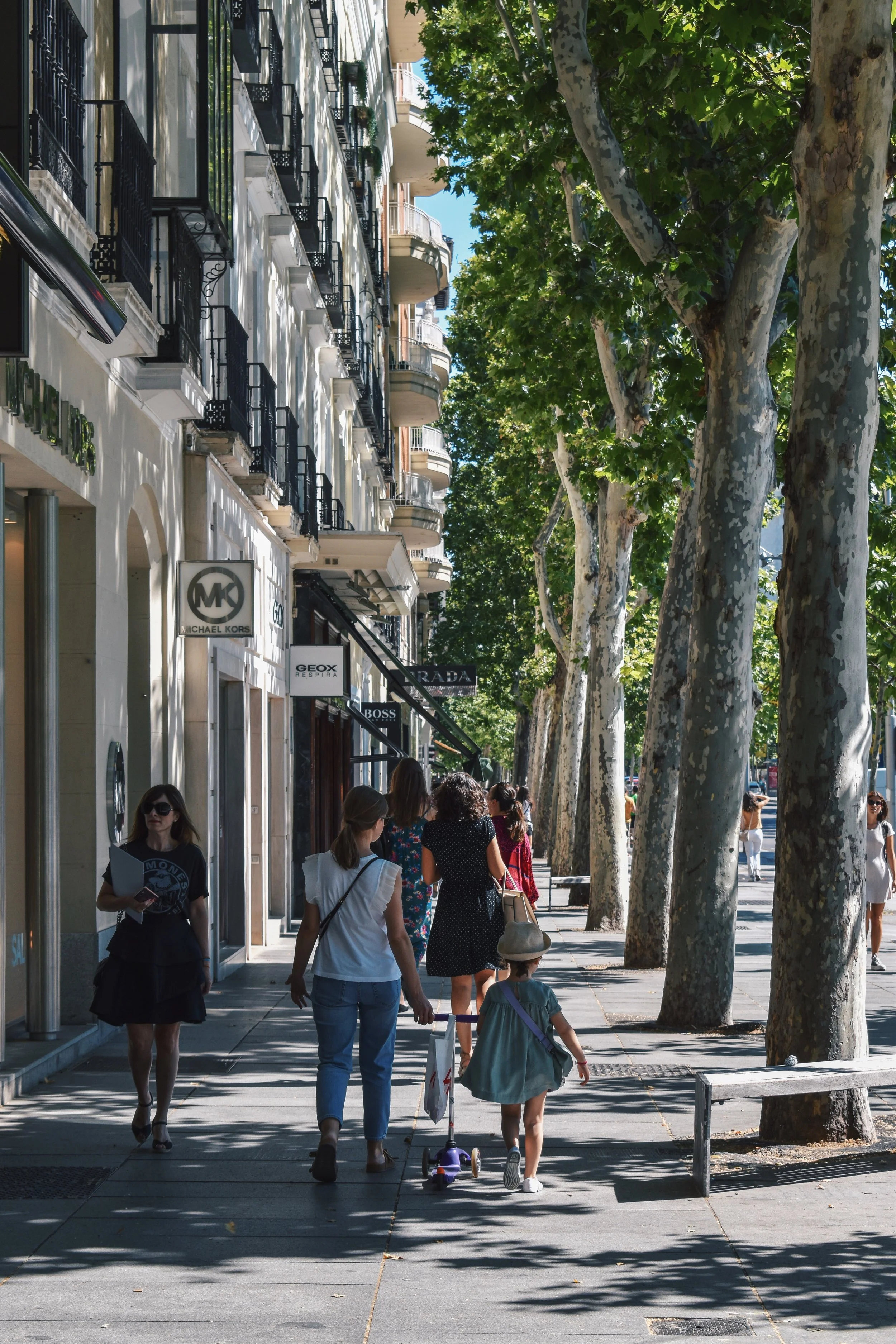The Ultimate Guide to Madrid: What to See, Do & Eat

Spain, a destination primarily built on sun, sand and sea with it's many developed coastal destinations, including Catalonia's gem of Barcelona, and the Costa del Sol destinations like Marbella and Malaga that attract a large number of sun-seeking travellers and the like, more in-land destinations including the Spanish capital city of Madrid seem to lose out.
But these days, thanks to the large number of cultural and artistic sights such as the world-famous Prado Museum housing works of many famous artists like El Greco, Velázquez, Goya and Picasso, and the rise in luxury hotels as well as Michelin-starred restaurants in the double digits, Madrid is starting to receive quite a bit of attention in recent years.
It's even been reported that international visitors to the Spanish capital city spend an average of 6 to 8 nights in the city, which is exactly what I did, and Madrid is most definitely not one of those cities that you'll easily bore of.
At the same time, I also found Madrid to not be one of those cities you burn through in an itinerary, hitting attraction after attraction with no room to breathe.
One of my favourite things to do included simply exploring interesting and some of the coolest neighbourhoods around, as well as stopping for a drink or three in one of the many fantastic cafes and bars that dot the city.
So here's a comprehensive guide to what to do and see in Madrid, including some of my favourite eats and coolest finds.
1. Visit the Royal Palace (Palacio Real)
The official residence of the Spanish Royal Family, the palace has housed previous Kings from Charles III to Alfonso XIII, and holds over 3000 rooms decorated with plenty of antiques and art.
The Royal Family no longer stays here, and the palace sees plenty visitors daily, and includes a €10 admission fee.
Even if you don't go in, you can walk over to the gates and see the palace and the massive courtyard in all its glory.
Like many other monuments in Spain, there are days and time slots where visiting is free, and if you opt not to pay for the monument, visit this page for all the details and whether you qualify for free or reduced admission prices.
2. Almudena Cathedral (Santa Iglesia Catedral De Santa María La Real De La Almudena)
Just across from the Royal Palace lies the Almudena Cathedral, Madrid's most important cathedral.
Construction began in 1879 and was interrupted by the Spanish Civil War, and was only fully complete in the 1990s.
The cathedral is a nice place to get some respite from the summer heat and take in the Neo-Romanesque Crypt, the oldest section of the cathedral.
If anything, I enjoyed the fact admission here was free (donations are accepted), because it felt like everywhere else in Spain required an admission fee for religious sites.
3. El Retiro Park (Palacio de Cristal)
Parque del Buen Retiro is one of Madrid's biggest city parks as well as possibly the most famous one.
The Retiro Park is a sprawling plot of green not far from Madrid's Atocha train station.
The most iconic sight is the Crystal Palace (Palacio de Cristal), a beautiful glass house with rays of sunlight pouring through the space, with art exhibitions from time to time. The Crystal Palace and Velázquez Palace are both in use by the Reina Sofía Museum as exhibition halls.
There is a lake situated in the park as well, one where you can rent a rowboat and row around the lake.
Beyond that, the park also has a Rose Garden (La Rosaleda) which is best during Spring, naturally, with roses in bloom everywhere. At the beginning of July though, there were only a few around and the rest withering.
4. Plaza de Oriente
A beautiful square just beside the Royal Palace of Madrid, Plaza de Oriente runs in a semi-circle lined with beautiful buildings like the Royal Theatre (Teatro Real), and bars and restaurants abound.
The flowers planted in the semi-circle shape beautify this square in the forefront of the aforementioned beautiful buildings.
Situated in a small park, take a seat on a bench and do some people watching.
5. Temple of Debod
The Temple of Debod is a small Egyptian temple perched on top of a hill in the Rosaleda del Parque del Oeste.
This is where you'll find a beautiful sunset, but unfortunately in July 2018, the monument was closed off to visitors and we were unable to go in.
I'm sure if we could, the grounds would have been nice, but there is a lookout point behind the temple which was a lovely view as well.
6. Gran Vía
You can't come to Madrid and not find yourself in Gran Vía at some point.
This is Madrid's Fifth Avenue equivalent, and one of the busiest streets in all of the capital.
The unmistakeable icon of Madrid is the Schweppes Building, as well as Plaza del Callao which is a big square right in front of it which is almost constantly bustling.
If you're up for some shopping, Gran Vía and it's surrounding streets are the place to be, with plenty of Spanish brands that have gone international, such as ZARA, Pull&Bear, Bershka etc., as well as other international brands like H&M.
Primark has a 5-storey complex which is almost like a mall or departmental store in itself, and if you find yourself in Madrid during Rebajas (Sales, mostly in the Winter and Summer), expect to find clothes positively flying off the racks everywhere you go.
7. Puerta del Sol
"All roads lead to Sol," at least that's how it goes in Madrid, as this is commonly known as Kilometre Zero, the most geographical centre point in all of Spain.
It's also Madrid busiest square, akin to Barcelona's Plaça de Catalunya, where you'll find many street performers daily putting on shows for (mostly) tourists.
Their shows are pretty interactive though, with many roped in to dance along with them, which is all great fun to see the first time. Though if there's anywhere I'd probably keep a closer eye on my valuables, this would be it.
Plenty of shops, bars, cafeterias, and the like can be found here, and it seems every street you head down from Puerta del Sol in every single direction, you'll be surrounded by crowds everywhere.
8. Círculo de Bellas Artes
Círculo de Bellas Artes is actually an art gallery situated at the end of Gran Vía, but is more famous for the oft photographed rooftop views of Madrid and Gran Vía, which you have to pay a couple of euros for to see for yourself.
On a Friday night, the queue was long and didn't seem to be moving, so we opted out of this and went to another rooftop bar instead.
There are plenty of hotels that can be found along or near Gran Vía, and I'd recommend doing those as you'll probably be less bombarded by crowds.
Read: Staying at Madrid's Dear Hotel— Rooftop Pools and Views Over Madrid's Gran Vía
Watching the sunset over Madrid in the middle of the city with a drink in hand is quite the experience.
9. Fuente de Cibeles (Cibeles Fountain)
The Cibeles building is a beautiful piece of architecture built in the Gothic style and is now Madrid's City Hall.
The fountains in the middle of the road that circle around it are one of the most beautiful views in all of Madrid, and you'll certainly be standing beside many other tourists for a photo opportunity on any side of the road you choose.
You can visit the restaurant and terrace bar with stunning views during sunset too.
In fact, this is where Madrid's pride of Real Madrid celebrate each trophy win, so if you happen to be in town when this is happening, I'm sure you'll be witnessing a very special moment alongside many other Madrileños.
10. Museo del Prado
Museum and art lovers rejoice, as the Prado Museum is one of the most renowned museums in the world, based on the three national treasures that are Goya, Velázquez and Picasso and houses extensive collections of their works and the works of many other artists.
This museum is a huge compound, and if I'm being honest, a little overwhelming at first sight, but this is the case with most vast museums.
There are also plenty of descriptions in both Spanish and English so it's relatively easy to follow.
If you'd like, you can take advantage of the free admission from 6pm to 8pm Monday to Saturday, and 5pm to 7pm on Sundays and holidays.
Be warned though, the queue does stretch during these hours but it also moves along relatively quickly.
11. Museo Nacional Centro de Arte Reina Sofía
Also another sprawling art museum featuring works by 20th century Spanish painters like Gris, Dali, Picasso and Miro, the Museo Nacional Centro de Arte Reina Sofía is easily the second most popular museum in Madrid.
But of course, you can also enter for free on Mondays, and Wednesdays to Saturdays from 7pm to 9pm.
Sundays offer free admission from 1:30pm to 7pm, and for the whole day on April 18th, May 18th, October 12th and December 6th.
12. Cine Doré
If there's any institution in Madrid bringing back the art of cinema, it's Cine Doré, playing films of many different languages shown in their original languages accompanied by Spanish subtitles.
Prices start from a more than reasonable €2 with a bar inside the cinema.
Expect arthouse and classic films here, with the occasional big budget flick.
13. El Rastro
El Rastro is Madrid's oldest flea market located in the La Latina neighbourhood with many visitors both foreign and local pouring in every Sunday from 9am.
You can find everything here from old to new, and here's where you'll be able to pick up some unique souvenirs.
Books, comics, music, clothes, trinkets and everything else you can think of can be found here.
14. Andén 0
Andén 0, or Platform 0 in English, is a living exhibition and museum.
It occupies the old Chamberí station, belonging to the first metro line that opened in Madrid in 1919.
The line only featured 8 stations, and you can now visit Chamberí which has been beautifully restored, and you can even go down to the platforms, where the metro still passes by this station till this day, hence the term living museum.
The grounds, including the signages, turnstiles, ticketing booths and the like are restored nicely, and it was one of the coolest finds in the city.
There are free guided tours, and the visit starts with a background into the history of the city metro via a video screening. However, all of this is solely in Spanish.
Still, information can be found online easily in other languages, and once you've got an idea of what Andén 0 is, it's easy to take it all in and gain an appreciation for what Andén 0 stands for.
15. Explore the neighbourhoods
This is one of my favourite things to do in Madrid, as you'll never know what you'll find, whether it'd be a nice local boutique with unique things, or a brilliant cafe you never knew about.
Below are some of my favourite neighbourhoods in Madrid.
Malasaña
I couldn't go without mentioning Malasaña, Madrid's hippy, bohemian neighbourhood that is characterised by the bustling bars and artisan cafes. Plenty of boutiques can be found here, and I could spend hours strolling the streets or popping into cafes to grab a bite and a coffee.
Lavapíes
Lavapíes is a neighbourhood that has been completely transformed by the large immigrant community that call Lavapíes home.
Traditional Spanish taverns have been swapped out for Senegalese restaurants and many craft shops are started and run by Indian or Chinese merchants. Nowhere else in the city will you see the diversity in these streets, particularly in the middle of the day where those strolling around will be residents of Lavapíes.
Come nighttime, plenty of bars bring in visitors by the droves.
Salamanca
If high street fashion is not quite for you, Salamanca has got you covered.
The wide, tree-lined boulevards are stocked with designer names and boutiques, and you can find many upmarket establishments around.
Still, on a tight budget, Salamanca is a nice place for a stroll.
16. Eat to your heart's content
Madrid is a city which is very well-represented when it comes to gastronomy.
Whether you're looking for local and regional cuisine like Andalusian or Galician, international cuisine like Japanese or Peruvian, hip coffee spots that dot many other exciting cities around the world from London to New York to Melbourne, Madrid has got it all covered.
There are fewer cities in the world that I have eaten as well as I ate in Madrid, and that's not an exaggeration.
Read: Madrid's Best Eats— From Tapas Restaurants to Food Markets to Hearty Brunches
TRAVEL TIPS
Getting Around: If you're going to be making use of public transport a lot, get the multi-trip card at the metro stations which are easy enough to purchase via the automated ticketing machines.
Single trip tickets start at about €4, possibly because they might be factoring in the cost of getting the card in the first place, but the 10 trip ticket costs about €12 and you can share this card with more than one person. Simply pass it on to get through the gantries.
Madrid is well-connected, and boasts one of the most developed metro networks in all of Europe, and will be the easiest way of getting around.
If you'd like, you can opt for taxis which aren't very expensive, though additional charges are paid by the passenger to travel to train stations like Atocha or the airport, though in Madrid it is a fixed price of €30 to get a taxi from the airport to the city centre, and can be split with up to 8 passengers.
In a bigger group, this will make more financial sense, but after much struggling with unions, Uber and Cabify have made headways into Madrid, and you can get a private hire car relatively easy.
Cabify is more popular among the Madrileños as it's more economically friendly.
DAY TRIPS
As you can imagine, Madrid is a good base for visiting the rest of the country thanks to it's geographic central location on the peninsula, as well as it being a hub for the high speed rail network and Madrid's Barajas Airport is also an air traffic hub.
However, just for the day, many popular day trips out include Toledo, a medieval Spanish town that is unique due to the fact the entire historic city centre is surrounded by the Tagus River and sits on top of a hill, which made it an ideal location for a fortress back in the day. Demarcated as a World Heritage Site, you can easily see the blend of Christian, Muslim and Jewish influences. Travelling to Toledo was a nice break from the big city bustle of Madrid, and I ended up enjoying it far more than I initially thought I would.
Read: Exploring the Medieval Town of Toledo
Segovia, another medieval city with cobblestoned streets and an old Jewish quarter, many come for the Roman Aqueduct and the city castle. This is also where the Spanish Roasted Suckling Pig comes from, for the food lovers. You can get to Segovia from Madrid via the high speed AVE train, which was a little too out of budget for my comfort, adding up to about €50 for a return ticket in July 2018, and thus opted out of this trip.
Aranjuez is another city with royal affiliations, and many come to see the World Heritage Site that is the Royal Palace, the summer palace of the royals. There is also a sprawling garden, but beyond the castle and its garden, there isn't too much to see, which is exactly what we need sometimes; just a relaxing day with not much of an itinerary somewhere beautiful.
Medieval towns and cities of former glories are all in the area, and Ávila is one of them, and you can still see the old city walls intact here. Not to mention churches, beautiful squares, and the enchantment of the cobblestoned streets.
From my trip to Spain this summer, I've turned some of my photography into my brand of everyday products which you can check out below. Worldwide shipping is available so if you're looking for a tote bag or postcard to take home to remember your travels if you too have been to these parts of Spain, and if you'd like to support this passion project of mine, look no further!
View the full product catalogue at the shop here.

